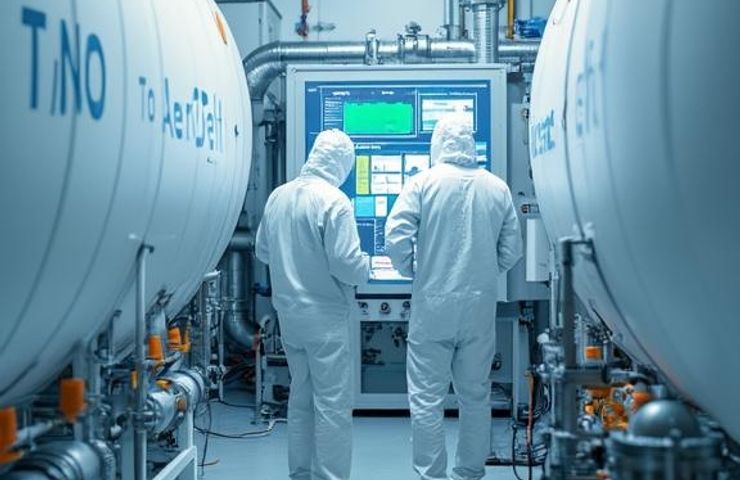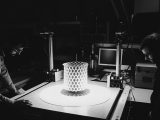
Liquid Hydrogen Testing Facility Boosts Hydrogen Infrastructure in The Hague
August 20, 2025It was on August 20, 2025, that TNO opened its state-of-the-art liquid hydrogen testing facility in Ypenburg, The Hague — a significant leap for European hydrogen infrastructure. This isn’t a run-of-the-mill lab; it’s a high-safety, climate-controlled playground where engineers can test cryogenic hydrogen systems to the edge, from aviation and maritime propulsion to industrial tanks and defense gear.
Sitting on the site of a former airfield-turned-R&D hotspot, the Ypenburg facility really underlines the Netherlands’ momentum in the sustainable energy transition. By running full-scale trials on liquid hydrogen parts, TNO aims to fast-track technology qualification, tighten safety protocols, and set new standards for how we produce, hydrogen storage, and deploy this game-changing energy source.
Back in the day, TNO leaned on liquid nitrogen to validate materials and low-temperature processes. But shifting to liquid hydrogen? That’s a whole new ballgame — temperatures near –253°C and a gas that’ll ignite if you slip up. The big payoff is hydrogen’s sky-high energy density, a real game-changer for decarbonizing sectors batteries can’t reach.
Thanks to its major ports, dense industrial clusters, and a push to install 10 GW of electrolyzers by 2030, the Netherlands is sprinting ahead as a hydrogen hub. Nestled at this crossroads of climate ambition and industrial innovation, TNO’s testbed provides the vital link between lab-scale prototypes and full-blown commercial deployment.
At the heart of the site are vacuum-insulated liquid hydrogen storage tanks, outfitted with multilayer insulation (MLI) and high-vacuum layers that shrink boil-off to a fraction of a percent each day. Fiber-optic sensors keep a close eye on pressure and temperature, spotting hotspots before they become problems.
The fuel delivery setup features quick-connect couplings and plumbing that mirror the hookups on planes and ships. Hydrogen is vaporized in controlled heaters before it fuels PEM fuel cell stacks built with proton exchange membranes and platinum-based catalysts. These stacks pack a serious punch and fire up fast — exactly what you need for takeoff or marine thrust.
Safety isn’t an afterthought. Laser-based leak detection, fixed-point gas sensors, and flame arrestors stand guard, while any routine boil-off is vented safely through stacks on the roof, far from populated areas. Real-time dashboards feed engineers live data on gas levels, pressures, and vent flows, so they’re always in the loop.
Collaborations & Demonstrations
The student-led AeroDelft team stole the spotlight early on. Backed by cryogenic expert Cryoworld and gas-industry leader Air Products, AeroDelft became the first student group to validate a full electric aircraft propulsion system on liquid hydrogen. Multiple test runs proved the powertrain could deliver steady thrust and meet tight temperature and vibration specs — a real feather in the cap for fuel cell technology.
Not to be outdone, the TU Delft Hydro Motion Team rolled in with a hydrogen-powered boat. Their custom vacuum-insulated tank, built to maritime certifications, faced load tests that verified thermal performance and seamless integration with an electric drive system. It’s a clear sign marine shipping could harness zero-emission hydrogen alongside batteries and ammonia solutions.
Strategic Implications
This facility plugs a critical gap in hydrogen infrastructure for hard-to-electrify sectors. By offering repeatable, high-safety testing, TNO speeds up tech qualification and helps shape the emerging rules around industrial decarbonization.
On the regulatory front, data from Ypenburg is feeding into ISO and EU standardization efforts. Detailed records on leak rates, material performance, and fault-condition responses will inform new regulations for designing and operating hydrogen transport and storage sites — smoothing out permitting and boosting public confidence.
From a market standpoint, validating full powertrains cuts investor risk. When banks and insurers see real-world test data proving reliability and safety, securing financing and insurance becomes much easier, opening the door for the next wave of clean-energy ventures.
Building the Talent Pipeline
By having teams like AeroDelft and TU Delft Hydro Motion Team work side by side with TNO engineers, the facility helps grow the specialized workforce tomorrow’s hydrogen economy demands. Students get hands-on experience with cryogenics, system integration, and safety management — skills you won’t usually find in a standard university lab.
Parallel Initiatives & Future Collaboration
Even though Ypenburg is a flagship, it’s part of a broader European push — think Germany’s GET H2 initiative and Norway’s maritime hydrogen trials. By sharing anonymized performance data, aligning test protocols, and co-hosting workshops, these labs can weave a continent-wide network that cuts redundant trials, harmonizes certifications, and accelerates progress across hydrogen production, hydrogen storage, and end-use technologies.
Looking Ahead
With initial test campaigns under its belt, TNO is already planning the next phase at Ypenburg: megawatt-scale benches for full-engine trials and multi-fuel capabilities to explore ammonia and liquid organic hydrogen carriers. These upgrades will cement the facility’s role as a crucible for clean propulsion innovation.
As Europe races toward its 2050 climate-neutral goals, places like Ypenburg are non-negotiable for ironing out the kinks before systems hit airport runways or port docks. That confidence, forged through rigorous testing, will be the spark that turns zero-emission aviation and maritime shipping into everyday realities.



 With over 15 years of reporting hydrogen news, we are your premier source for the latest updates and insights in hydrogen and renewable energy.
With over 15 years of reporting hydrogen news, we are your premier source for the latest updates and insights in hydrogen and renewable energy.